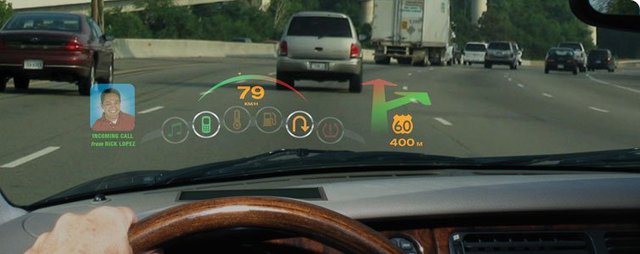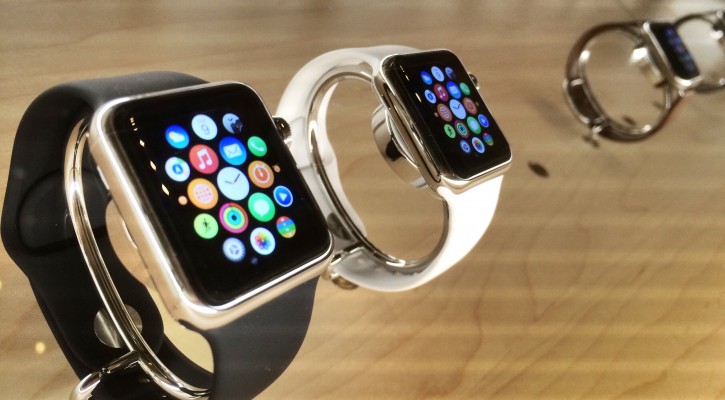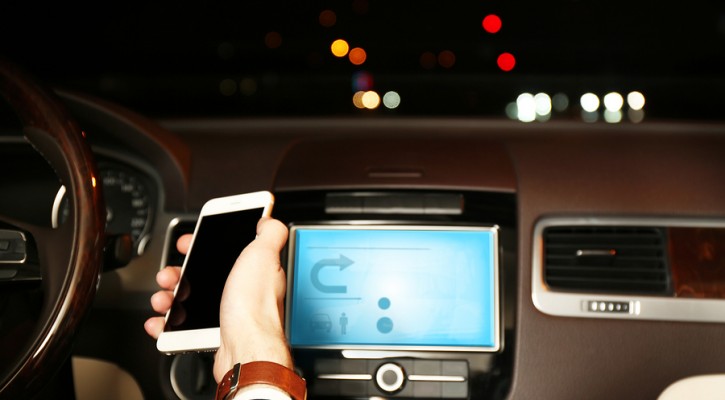Category Archive: Distracted Driving

Prescription Sleeping Pills Lead To Higher Crash Rate
July 7, 2015
A study conducted by the University of Washington School of Pharmacy shows that people using prescribed sleeping pills are at a greater risk for experiencing a motor vehicle crash. The research, published in the American Journal of Public Health, revealed that the risk of a car crash is nearly double among new users of the medications temazepam (Restoril), zolpidem (Ambien, Ambien CR) and trazodone (Desyrel).
The dangers posed by these drugs for drivers is worse for those who have been newly prescribed and the increased crash risk can last for up to a year. Among the three drugs followed in the study, temazepam showed the least risk.
The head researcher, Ryan Hansen was quoted as saying the idea for the research came from a friend who, after taking a prescription sleeping pill, woke up in the kitchen and noticed a bite taken out of some raw pork in the refrigerator.
Over the last few years there have been many instances of what has been dubbed “sleep driving” while using the popular prescription pill Ambien. The most notable story involved US Rep. Patrick Kennedy of Rhode Island who crashed into the gatehouse of the US capitol in the middle of the night. He explained to capitol police that he was late for a vote.
The list of side effects for Ambien include the following warnings;
- “Ambien may impair your thinking or reactions. You may still feel sleepy the morning after taking this medicine, especially if you take the extended-release tablet, or if you are a woman. Wait at least 4 hours or until you are fully awake before you do anything that requires you to be awake and alert.”
- “Some people using this medicine have engaged in activity such as driving, eating, walking, making phone calls, or having sex and later having no memory of the activity. If this happens to you, stop taking Ambien and talk with your doctor about another treatment for your sleep disorder.”
Ambien has become one of the most prescribed drugs in America. The researchers in this study suggested that health care providers need to evaluate the necessity of these sleeping pills vs the risks they pose. They suggested that insomnia can be treated without sleeping pills by lifestyle changes such as reduced caffeine use and exercise.
Any drug that can make you sleepy, including common over-the-counter antihistamines such as Benadryl can affect your driving. You can be arrested for DUI if your driving abilities are impaired by any type of drug including over-the-counter and prescription medications.
Read more: For new users, sleeping pills may double car crash risk

Heads Up Displays, Helpful Or Harmful?
June 8, 2015
An article by Joel Feldman, the founder of End Distracted Driving points out the possible dangers of heads up displays that are being developed for automobiles. Heads up displays are supposed to offer the promise of less driver distraction because the driver can view dashboard information without taking his or her eyes off the road ahead. However, rather than making the driving environment safer, some safety experts fear that heads up displays will, instead, just add to the mass of distractions facing drivers today.
Heads up display technology or HUDs as they are commonly known, have been in the aviation industry for decades. Military aircraft commonly use HUDs as an aid in dogfights and on bombing runs. Where HUDs in military aircraft differ from the civilian use of HUDs in cars is that the military HUD is often helping the pilot to focus on and aim at a target that may not be in view of the pilot; military pilots don’t focus on the HUD at all times.
There’s an old saying in military aviation that to be safe, a pilot must first aviate, navigate, and then communicate. Basically, what that means is that the pilot has to concentrate first and foremost on flying the aircraft. All of the navigation and communication input can be distracting and make the pilot lose focus on the job of flying the aircraft.
The same is true for cars. While the HUD is supposed to allow the driver to keep his or her eyes on the road, all of the information beamed on the windshield can actually work to make the driver lose focus on the road ahead. The driver must first drive the car and that means looking at much more than just the road directly ahead.
Hazards can come at a driver from all directions and the driver must be constantly on the lookout for those hazards. Information such as incoming call or email notices, road directions, and a number of other bits of info that could be projected can act to distract the driver’s vision from further down the road or from the sides and rear of the car where hazards could be approaching.
Safety experts say that, despite the claims of the HUD manufacturers that the technology will make the driving environment safer, there are no studies to back up those claims. Until those studies are done, vehicle manufacturers should put the brakes on the introduction of heads up displays.
Read more: Heads-Up Displays are Not an Answer to Driver Distraction
Photo credit: Pico Projector-Info.com
Smartphone Users Go Beyond Texting To Web Surfing, Video Chats While Driving
May 20, 2015
Smartphone users admit to going beyond texting while driving to a wide variety of smartphone activities according to a new study by AT&T. While cellphone use and texting are still the most common activity that drivers engage in, the AT&T study revealed that 70 percent of drivers engage in other smartphone activities such as taking selfies and even video chatting.
According to the AT&T news website, smartphone activities people say they do while driving include:
- Text (61%)
- Email (33%)
- Surf the net (28%)
- Facebook (27%)
- Snap a selfie/photo (17%)
- Twitter (14%)
- Instagram (14%)
- Shoot a video (12%)
- Snapchat (11%)
- Video chat (10%)
Other unsettling findings include:
- 62% keep their smartphones within easy reach while driving.
- 30% of people who post to Twitter while driving do it “all the time.”
- 22% who access social networks while driving cite addiction as a reason.
- Of those who shoot videos behind the wheel, 27% think they can do it safely while driving.
While AT&T is one of the major cellphone and smartphone marketers in the US, they recognized the dangers of cellphone use and texting while driving years ago. To educate drivers on the dangers of these activities, they launched the “It Can Wait” program in 2010. Their videos present a powerful message on the dangers of texting while driving and the impact those decisions can have on the cellphone user and their family.
As a result of this study, AT&T says it will expand the It Can Wait program to go beyond texting and warn drivers about the dangers of engaging in other types of smartphone activities while driving.
Other studies show that drivers are starting to realize the dangers of texting but, in spite of that awareness, they still seem to think that they are more skilled in the practice and the dangers only apply to other, less skilled drivers. Now it seems that the very dangerous issue of driver distraction is moving beyond texting into even more dangerous distracting activities.

The Apple Watch And Driving
May 4, 2015
Apple has recently introduced its Apple Watch with a lot of hoopla about all of its capabilities including email and phone. What they aren’t saying much about are the dangers the new Apple Watch can pose for drivers who try to use it.
Distracted driving is a major problem in the US with 3,154 deaths and 424,000 injuries blamed on distracted driving in 2013. If that’s not a big enough problem, it seems that electronics manufacturers are trying to add more and more devices to distract drivers every month.
The Apple Watch is advertised as a device to keep you connected at any time, wherever you may be. That may be true but that connectivity could come at a great cost if you try to use it while driving.
The main distraction in an Apple Watch is its size. The Apple Watch comes in two sizes measuring only 1.4 to 1.6 inches from top to bottom. Making a selection on a screen size that small is going to take a bit of concentration. Scrolling through selections on an Apple Watch is accomplished by use of a small hand wheel on the side and using it will require a user to both look at the watch on one hand while using the other hand to scroll and select options.
Even if users try to use the voice activated Siri, studies have shown that using Siri or other voice activated systems is more distracting than using a hand-held phone.
While the Apple Watch may be a wonderful device in other situations, using it while driving is obviously going to be cumbersome and very distracting. A lot of states have either passed or are considering bans on the use of cell phones while driving. Now they may have to consider bans on the use of the Apple Watch and other similar Android devices. However, laws like that are going to be hard to enforce.
Read more: Smartwatches Reported To Be Less Safe While Driving Than Smartphones

Is Voice Activated Texting While Driving Safer?
April 23, 2015
Automakers and cell phone companies are pushing voice activated texting as a safe alternative to manual texting but is really safer? Not according to researchers at Texas A&M University’s Transportation Institute (TTI).
While most studies of this kind involve observing study participants on computerized virtual driving courses, Christine Yager, an associate transportation researcher at TTI conducted a study in actual cars on a closed driving course; the first study of its kind.
Forty-three participants were observed under several different driving scenarios. They first drove the course without the use of cell phones and their reaction times were measured to create a baseline. They were then observed three more times, texting manually and using two different voice activated texting programs (Siri and Vlingo). Test subject reaction times to lights that came on at random times on the course were measured in each of the driving scenarios.
The study showed that, if the driver chose to visually verify the contents of the text, the voice activated texting systems offered no safety advantage over manual texting.
According to the TTI website, other findings from the study showed:
- Driver response times were significantly delayed no matter which texting method was used. In each case, drivers took about twice as long to react as they did when they weren’t texting. With slower reaction times, drivers are less able to take action in response to sudden roadway hazards, such as a swerving vehicle or a pedestrian in the street.
- The amount of time that drivers spent looking at the roadway ahead was significantly less when they were texting, no matter which texting method was used.
- For most tasks, manual texting required slightly less time than the voice-to-text method, but driver performance was roughly the same with both.
- Drivers felt less safe when they were texting, but felt safer when using a voice-to-text application than when texting manually, even though driving performance suffered equally with both methods.
